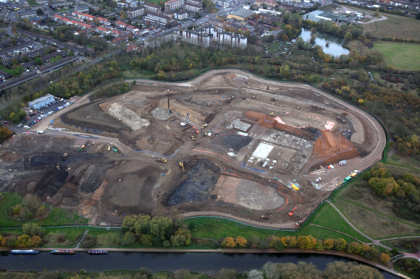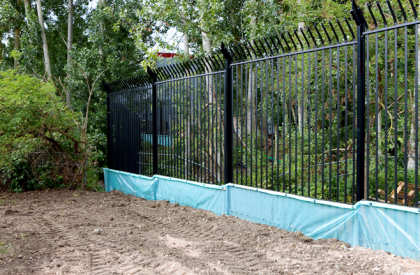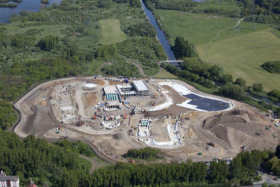Lee Valley White Water Canoe Centre |
82.5% |
Construction Only Award
Project Team:
Construction: Morrison
Construction & Hyder
Consulting
Source: Olympic Delivery Authority |
The Project
Morrison Construction Ltd (MCL), supported by Hyder Consulting Ltd, has successfully completed the construction of the Lee Valley White Water Canoe Centre. This is the first venue to be opened for public use before the London 2012 Olympic and Paralympic Games and will be used during the Games for the white water canoe slalom event. After the Games, the site will be retained for legacy use by the Lee Valley Regional Park Authority.
The scope of works comprised the remediation of a former landfill site, followed by preparatory enabling works and subsequently the construction of two new canoe slalom courses - a 300m competition course and a 160m intermediate/training course, both fed by a 10,000sqm lake. Groundwater is used to maintain the water level within the lake, which in combination with 4 no. 350kW and 3 no. 150kW pumps and an innovative in-course obstacle system, a fast flowing and challenging c
ourse has been created for the Games.
The key Environment & Sustainability achievements of the Project include:
Ecology & Biodiversity
- The 32Ha construction project was bounded by a Site Special
Scientific Interest/ Special Protection Area. The SSSI/SPA
was prime reptile habitat, to prohibit reptiles from entering
the construction site a reptile fence was installed around
the construction site boundary. The fence was regularly
monitored and maintained to ensure the integrity of the
structure.
|
Reptile fence |
Water Resources and the Water Environment
- A system of swales and wetlands were constructed to manage surface water drainage. Bypass separators, rainwater harvesting and a flood bund were included within the design to provide a sustainable drainage and water recycling solution.
Material Use
- Extensive remediation works were undertaken to transform this former landfill site into a working platform to allow construction works to commence. MCL and Hyder Consulting ensured that sustainable remedial methods were at the forefront of the design, thus limiting the volume of material removed from site.
- To facilitate the course design, in excess of 200,000 tonnes of materials were imported on to the site, creating a re-modelled land profile for the canoe courses. Recycled aggregates were used on site, which resulted in the project achieving 75% recycled aggregates (by weight) and 40% recycled content (by value) against the WRAP Net Waste Tool, exceeding ODA targets of 25% recycled aggregates (by weight) and 20% recycled content (by value).
- The surface dressing for footways and roads were sourced from locally available gravels.
- The land remodelling was designed to fully account for the likely compressibility of the sub-surface landfill materials. By using recycled materials to surcharge the underlying landfill material, the use of piled foundations was designed out. A secondary benefit of designing out piled foundations was that pollutant pathways to the chalk aquifer were not created.
|
Olympic Course land profile under construction |
Effects on Neighbours
- The facility will be open to the public in the evenings.
To minimise light pollution and energy consumption, low
spill lighting was designed and installed to be zonally
controlled, only lighting those areas being utilised.
Relations with the Local Community and Other Stakeholders
- A positive relationship with local community and stakeholders was established. The project donated cherry blossom trees to local residents and site personnel donated their time and skills to educate children living near the construction site about the dangers of playing on or near the site.
- Community liaison was maintained through the use of a purpose built community viewing tower which overlooked the works. The project newsletter was distributed regularly which provided an update on progress of the works.
|
Competition course |
Part way through the building and course construction |






